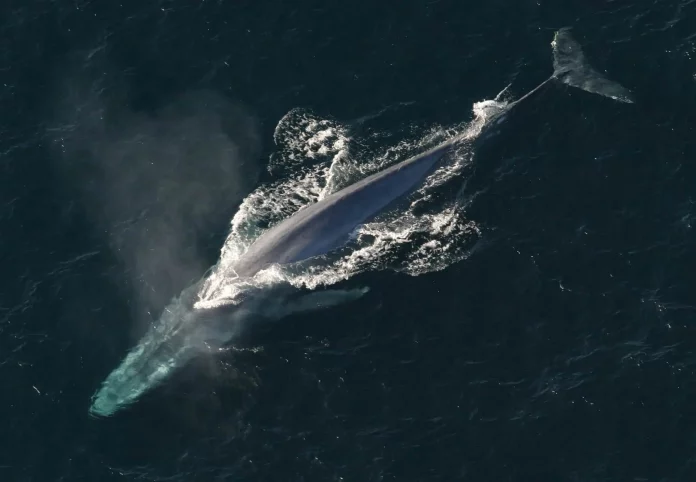Blue whales are undoubtedly a wonder of nature, the biggest animals that have ever graced our planet. Known by their scientific name, Balaenoptera musculus, these enormous sea animals fill anybody who is fortunate enough to see them with amazement and wonder. We go further into the mysterious world of these magnificent animals in this extensive piece, covering everything from their habitats and behaviors to their diet, procreation, and conservation initiatives meant to ensure their existence.
Uncovering the Secret Lives of Blue Whales
Habitat
The capacity of blue whales to travel hundreds of kilometers in quest of food and mates throughout the world’s enormous oceans is well known. Essentially, the whole ocean serves as their home. It is well known that they favor the deep, nutrient-rich pelagic zone waters.
Wonders of Migration
Blue whale migration is one of the most fascinating features of these animals. They travel great distances in pursuit of their prey, often over whole seas. The availability of krill, which is impacted by a number of environmental conditions, is directly related to their movement patterns.
Distribution
Despite being more concentrated in some areas, blue whales are found all around the world. Every major ocean, ranging from the Arctic to the Antarctic and all points in between, is home to them. Generally speaking, the North Pacific, North Atlantic, and Southern Oceans have the largest concentrations.
The population of this whale species is not a fixed population. Their desire for food and reproduction causes them to behave in a seasonal manner. They move to higher latitudes in quest of an abundance of krill throughout the summer. To reproduce and give birth to their calves, they relocate to warmer waters during the winter.

Behavior and Social Organization
Whales are predominantly solitary creatures, but they can exhibit social behavior at times. They are known to communicate with one another through vocalizations, often described as hauntingly beautiful songs. These songs are believed to play a role in mate attraction and maintaining social connections.
Diving into the Depths
Their behavior also includes impressive diving abilities. Blue whales can reach depths of up to 330 feet and stay submerged for nearly 20 minutes in search of their prey. Such remarkable adaptations make them perfectly suited for life in the deep, open ocean. Similar to terrestrial mammals, whales breathe via their lungs and surface periodically every five to ten minutes. Whales have a nostril on top of their heads, and they can hold their breath for 45 to 60 minutes when submerged.
Diet
Their basic and favorite food of them is the small shrimp species called krill. Fish and copepods (small crustaceans) are occasionally eaten as part of a blue whale’s diet.
When they hunt food, they open their mouths and swim toward the large herd of krill. Normally a mature animal eats about a ton of these small prawns at a time and eats about four to eight tons per day.
The small shrimp that is caught in the mouth is held in the mouth by the long fibrous structure in the mouth. They push water out of their mouths and out of their tongues, leaving only the shrimps behind the mouth. This is known as a filter-eating system
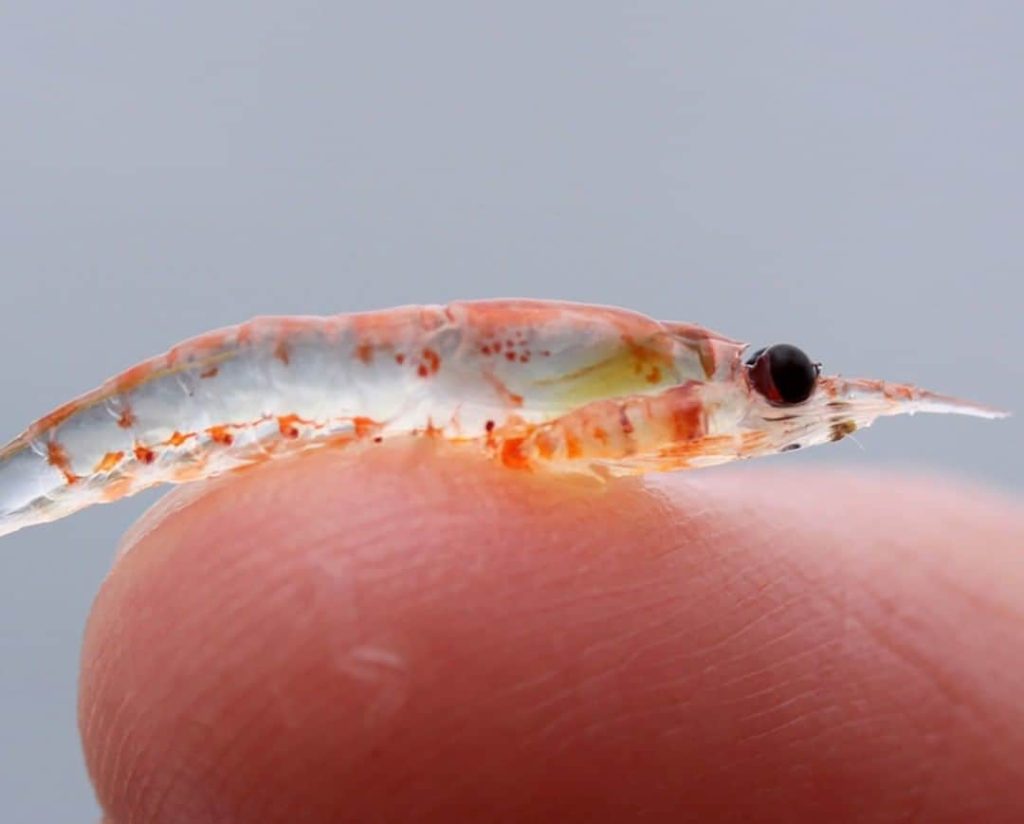
Reproduction and Lifespan
Reproduction in whales is a marvel in itself. After a gestation period of nearly a year, females give birth to a single calf. These newborns, despite being massive in human terms, are only a fraction of their parent’s size, emphasizing the scale of these creatures. The pups grow on the mother’s milk and they drink about 90 liters of milk per day.
They are weaned at 7 to 8 months when it is 15 m or 45 feet long. The cub lives with its mother for a few more months and then swims for an independent life. A mother whale usually gives birth to a cub every 2 1/2 years or 3 years. extensively have not been studied in this regard
Blue whales are known for their impressive lifespan, often exceeding 70 to 90 years. They mature relatively slowly, reaching sexual maturity at around 5 to 15 years of age. This extended lifespan and slow maturation are essential factors in their population dynamics and the conservation strategies required to protect them.
Physical Features
Whales are enormous animals whose size really blows our minds. These creatures are capable of reaching lengths of up to 100 feet; some even go beyond that distance. To put things in perspective, only their tongues can weigh as much as an elephant, and their hearts alone can be as big as a little car! Moreover, females are bigger than male ones, and whales in the Southern Hemisphere tend to be larger overall.

The longest recorded blue whale up to 110 feet is a female, measured at a southern Georgia whale sanctuary in the South Atlantic (1909). She was 33.58 meters (110 feet) tall. The largest whale was a female one that was hunted on March 20, 1947, in the southern Antarctic Ocean. Her weight was 190 tons (418,878 lb) and was equivalent to 30 elephants or 2,500 humans.
Why is a blue whale called blue?
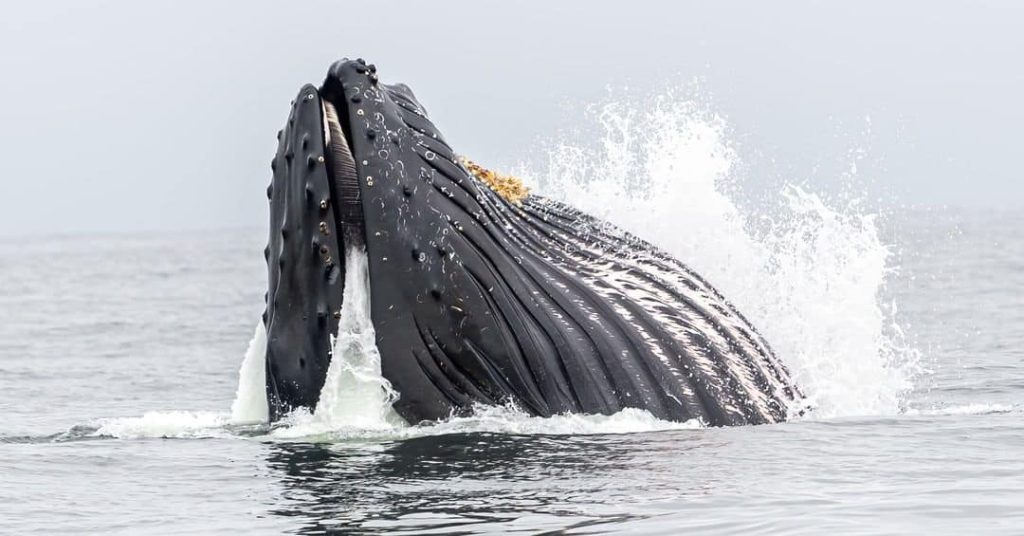
The bluish-gray color of their skin gives blue whales their name. They have a striking hue and a big body that helps them stand out in the ocean. Their distinct look is further enhanced by the mottling of lighter and darker areas on their skin.
The best place in the world to see blue whales
Whales usually spend the summer in polar waters and migrate to regions near the equator when winter arrives.
In the North Pacific, They can be seen in large numbers in Monterey Bay from July to October. Baja California Sur in San Diego and Mexico in July and August and the Cortez Sea from January to March can see. In the North Atlantic, can be seen from St. Lawrence Bay and off the coast of Lawrence Marine Park in Canada from June to September. the whales can also be found in Reykjavik and Húsavík, Iceland, from May to August.
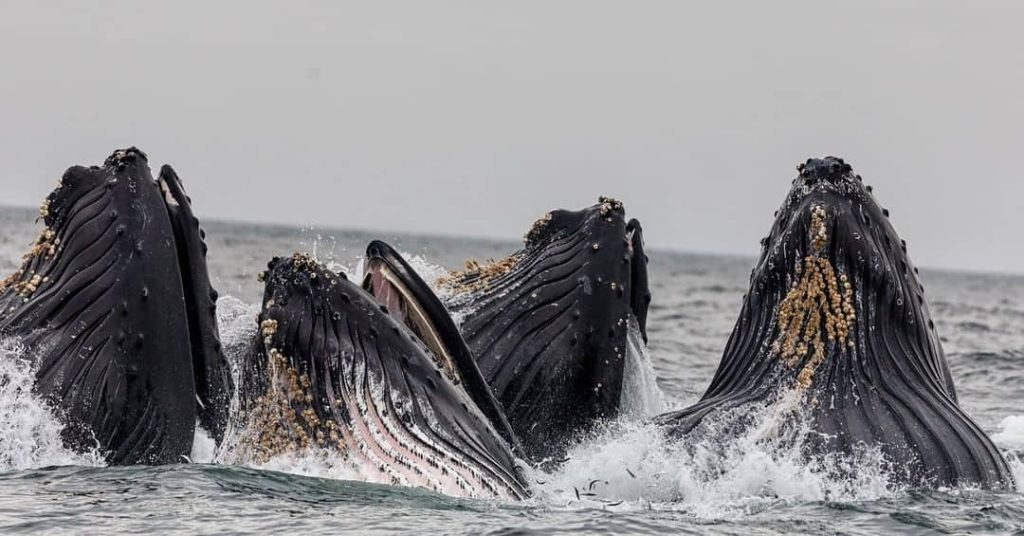
Australia’s Perth Canyon and the Bass Strait between Victoria and Tasmania are good places to watch blue and pygmy whales between March and May. In New Zealand, the southern island of Kaikoura is a good place to watch blue and pygmy whales between July and August.
February and March are the ideal times to view these creatures in the Azores. In the deep waters off the coast of Sri Lanka, in the Mirissa area of the Indian Ocean, Blue whale sightings occur most frequently in March and April. From December to March may be seen in the Gulf of Corcovado off the west coast of Chilo Island, which is located in the Southern Hemisphere between the island chain of Chytecus and the Chilean mainland. They have been seen to roam all year round, particularly in tropical regions where the equator is near. However, not a lot of research has been done on these animals’ behavior.
Suggested Read– Whale Watching Places in Sri Lanka
Threats and Conservation
In the modern world, blue whales confront several risks despite their great size and power. Among the difficulties they face include collisions with big boats, becoming tangled in fishing gear, and the effects of climate change on their food supplies.
Blue whale conservation is a worldwide issue, and these amazing animals are the target of coordinated efforts. In order to lessen ship hits and avoid entanglements in the gear, regulations have been implemented. Furthermore, studies and public awareness initiatives are essential to their maintenance.
Blue Whale Facts
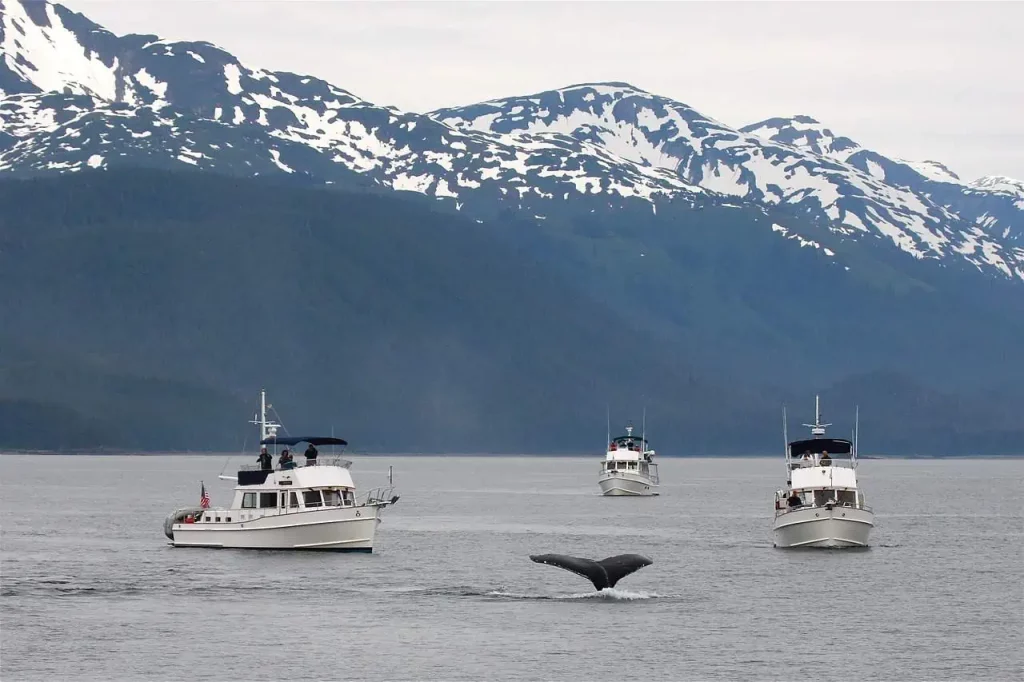
- Size and Weight: Blue whales are the largest animals ever known to have existed. They can reach lengths of up to 100 feet (30 meters) and can weigh as much as 200 tons or more.
- Appearance: They have a long, sleek, and streamlined body with mottled blue-gray skin. They have a flat, U-shaped head and a large, broad tail fluke, which can be more than 20 feet (6 meters) wide.
- Heart Size: The heart of them is enormous, weighing as much as a small car and measuring about the size of a small automobile. It’s considered the largest heart of any animal.
- Diet: They are filter feeders, primarily consuming small shrimp-like animals called krill. They use their baleen plates, which act as a filter, to trap krill while expelling water. They can consume several tons of krill in a single day.
- Migration: This whale type is known for their long-distance migrations. They travel between cold, krill-rich feeding grounds in polar regions and warmer breeding and calving areas in tropical and subtropical waters.
- Vocalizations: They are known for their distinctive and low-frequency vocalizations. They produce some of the loudest sounds in the animal kingdom, including a series of moans, groans, and songs. These vocalizations can be heard by other whales of their type over hundreds of miles.
- Population: While exact population numbers are challenging to determine, it’s estimated that there are between 10,000 and 25,000 blue whales left worldwide. Populations can vary by region, with some areas having more significant numbers of them than others.
- Life Span: They have a relatively long lifespan, with some individuals living up to 70-90 years.
- Predators: Adults have very few natural predators due to their size. Orcas (killer whales) have been known to occasionally target and attack calves.
- Skin and Barnacles: Their skin is often covered in barnacles and parasites, giving it a rough texture. These organisms provide insights into the whale’s migratory patterns and behavior.
- Size at Birth: Calves are born relatively large, measuring about 23 feet (7 meters) in length and weighing several tons.
- Endangered Species: This whale species is listed as an endangered species under the U.S. Endangered Species Act and is protected in many countries worldwide.
- Tourism: Whale watching has become a popular ecotourism activity in some regions, where tourists can observe these majestic creatures in their natural habitat. Tour operators often follow guidelines to minimize disturbance to the whales.
- Conservation Status: Blue whales were once hunted to the brink of extinction during the era of commercial whaling. They were granted protection under the International Whaling Commission (IWC) in 1966, which led to a ban on hunting. Since then, their populations have slowly recovered, but they are still classified as endangered.
Conclusion
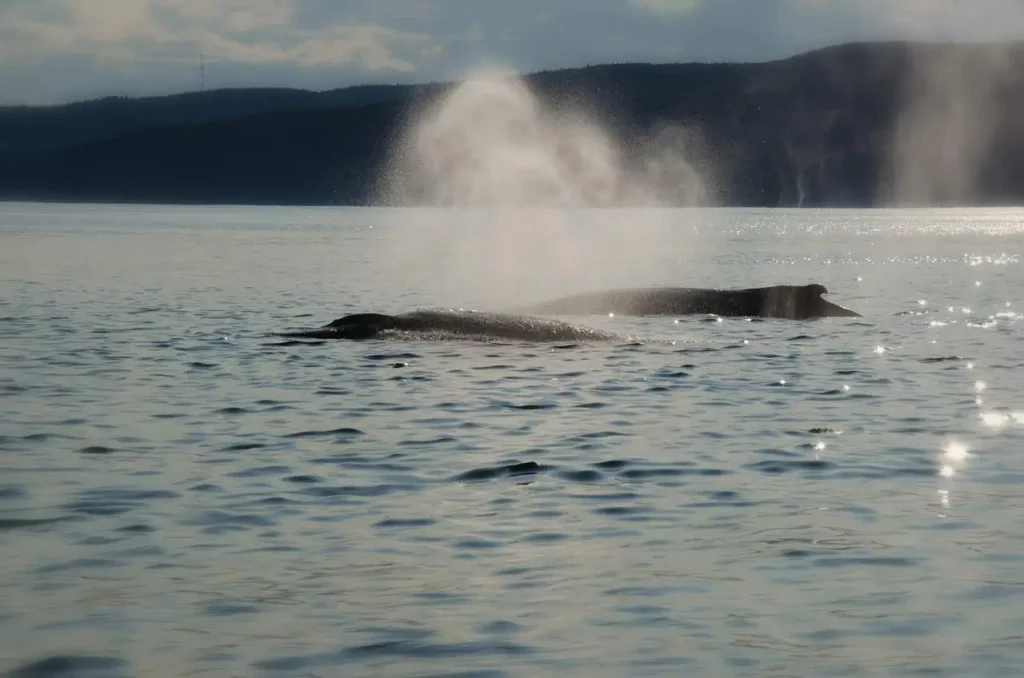
A living example of the wonders of nature is blue whales. They are a subject of everlasting intrigue because of their amazing size, unique characteristics, and enigmatic behavior. Despite the many obstacles these amazing animals have had to overcome, more people are realizing how crucial it is to preserve both them and their aquatic habitats. It is hoped that future generations will have the opportunity to share the earth with these gentle giants as we continue to research and protect these amazing animals.

